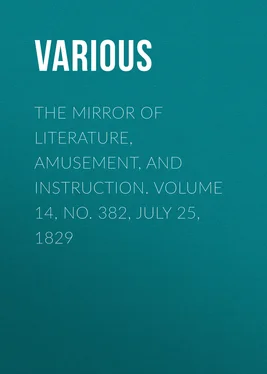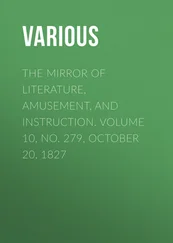"When the Spaniards invaded the palaces of Chili and Peru, they found them filled with works of art. Cook found considerable beauty of drawing and skill of workmanship in the ornamented weapons and war-canoes of the islanders of the South Sea; and in the interior recesses of India, sculptures and paintings, of no common merit, are found in every village. In like manner, when Caesar landed among the barbarians of Britain, he found them acquainted with arts and arms; and his savage successors, the Saxons, added to unextinguishable ferocity a love of splendour and a rude sense of beauty, still visible in the churches which they built, and the monuments which they erected to their princes and leaders. All those works are of that kind called ornamental: the graces of true art, the truth of action and the dignity of sentiment are wanting; and they seem to have been produced by a sort of mechanical process, similar to that which creates figures in arras. Art is, indeed, of slow and gradual growth; like the oak, it is long of growing to maturity and strength. Much knowledge of colour, much skill of hand, much experience in human character, and a deep sense of light and shade, have to be acquired, to enable the pencil to embody the conceptions of genius. The artist has to seek for all this in the accumulated mass of professional knowledge: which time has gathered for his instruction, and with his best wisdom, and his happiest fortune, he can only add a little more information to the common stock, for the benefit of his successors. In no country has Painting risen suddenly into eminence. While Poetry takes wing at once, free and unincumbered, she is retarded in her ascent by the very mechanism to which she must at last owe at least half her glory. In Britain, Painting was centuries in throwing off the fetters of mere mechanical skill, and in rising into the region of genius. The original spirit of England had appeared in many a noble poem, while the two sister arts were still servilely employed in preserving incredible legends, in taking the likeness of the last saint whom credulity had added to the calendar, and in confounding the acts of the apostles in the darkness of allegory."
Then follows an outline of early Art in England, in the embellishment of cathedrals, &c.; among which is the following notice of one of the earliest of our attempts at historical portraiture which can be authenticated:—
"It is a Painting on Wood; the figures are less than life, and represent Henry the Fifth and his relations. It measures four feet six inches long, by four feet four inches high, and was in the days of Catholic power the altarpiece of the church of Shene. An angel stands in the centre, holding in his hands the expanding coverings of two tents, out of which the king, with three princes, and the queen, with four princesses, are proceeding to kneel at two altars, where crosses, and sceptres, and books are lying. They wear long and flowing robes, with loose hair, and have crowns on their heads. In the background, St. George appears in the air, combating with the dragon, while Cleodelinda kneels in prayer beside a lamb. It is not, indeed, quite certain that this curious work was made during the reign of Henry the Fifth, but there can be little doubt of its being painted as early as that of his son."
Конец ознакомительного фрагмента.
Текст предоставлен ООО «ЛитРес».
Прочитайте эту книгу целиком, купив полную легальную версию на ЛитРес.
Безопасно оплатить книгу можно банковской картой Visa, MasterCard, Maestro, со счета мобильного телефона, с платежного терминала, в салоне МТС или Связной, через PayPal, WebMoney, Яндекс.Деньги, QIWI Кошелек, бонусными картами или другим удобным Вам способом.
Johnson's Life of Thomson.
Show-houses is a very appropriate term for such of the mansions of our nobility and gentry as are open to public inspection. Hagley is extremely rich in treasures of art. A mere catalogue of them would occupy the whole of our sheet; but we must notice two curiously carved mahogany tables, which cost £200.; four exquisitely carved busts of Shakspeare, Milton, Spenser, and Dryden, by Scheimaker, and bequeathed to George, Lord Lyttleton, by Pope; the portrait of Pope and his dog, Bounce; a fine Madonna, by Rubens; several pictures by Vandyke, Sir Peter Lely, Le Brun, &c. &c. the Gobelin tapestry of the drawing room; the ceiling painted by Cipriani; and the family pictures, among which is Judge Lyttleton, copied from the painted glass in the Middle Temple Hall.
Thomson's affectionate letter to his sister, (quoted by Johnson, who received it from Boswell,) is dated "Hagley, in Worcestershire, October the 4th, 1747."
Anteuil, near Paris.
Horace speaks thus to his steward in the country. Epistle xiv. book 1.
Lewis XIV.
See Ode sur la prise de Namur.
This metaphor has been considered too bold, and perhaps justly, but Despreaux did not think it so. He observed to M. Dagnesseau that if this line were not good, he might burn the whole production.












